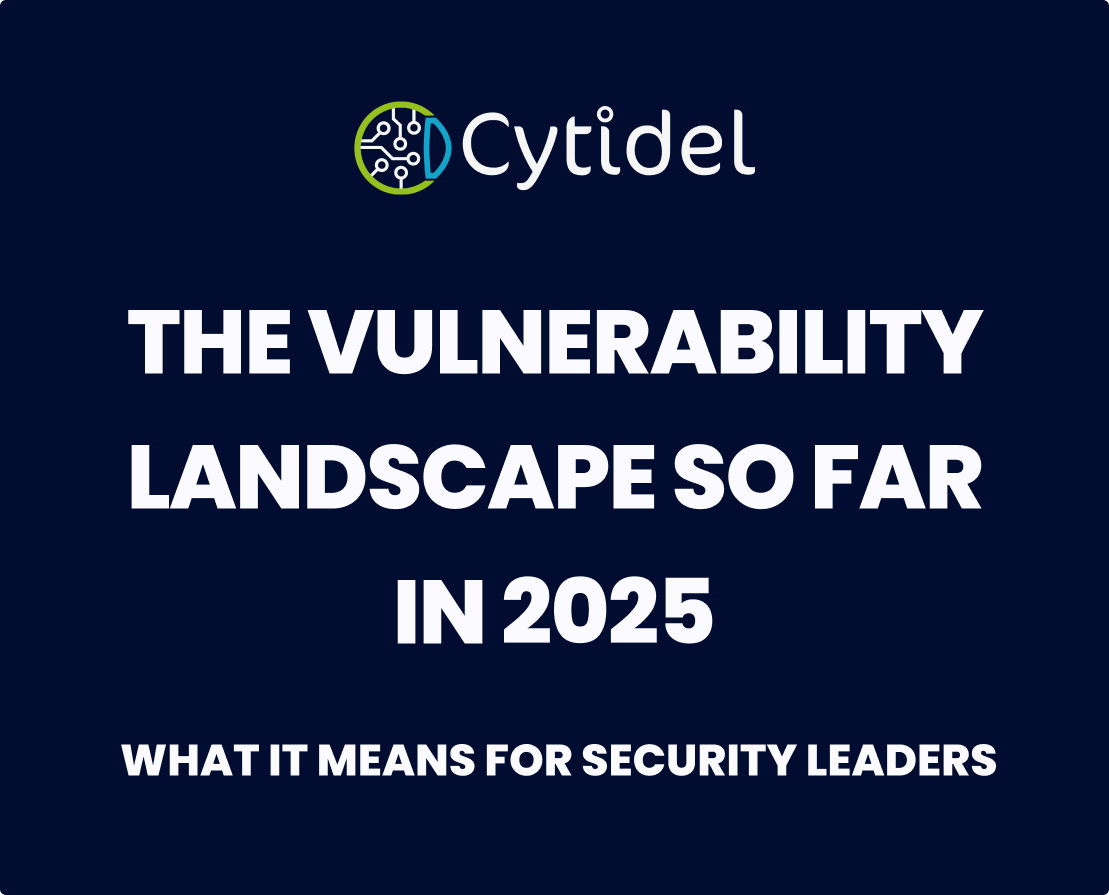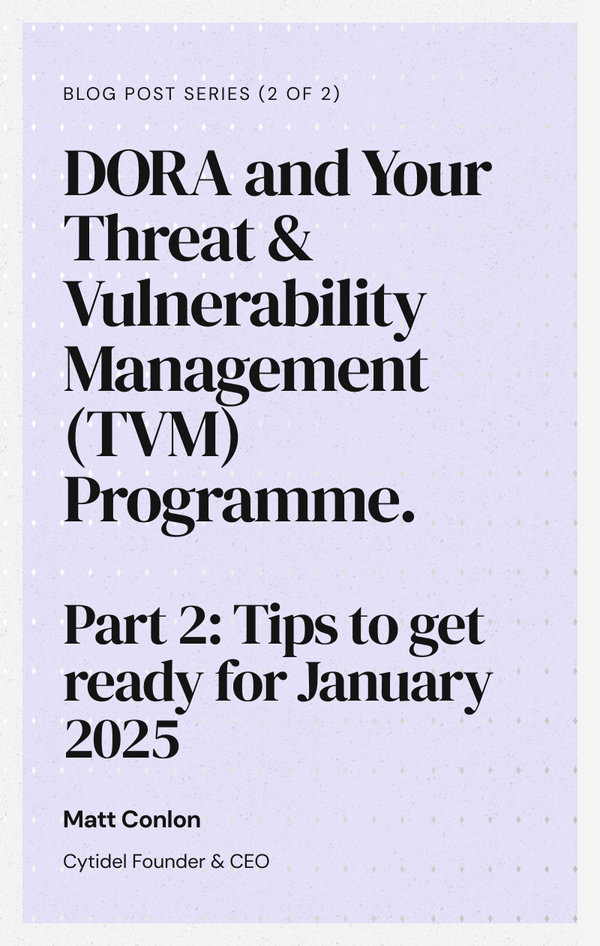When a Cornerstone Cracks: What the NVD’s Funding Crisis Means for Cybersecurity
Funding lapses and delays have exposed how fragile the National Vulnerability Database has become. As updates pause and backlogs grow, Cytidel explores what this means for vulnerability management — and how security teams can stay resilient when public data sources slow down.

For almost two decades, the National Vulnerability Database (NVD) has served as cybersecurity’s public backbone. Maintained by NIST, it has enriched raw vulnerability data with essential context — assigning CVSS scores, mapping affected products, and cataloguing weaknesses that power everything from scanners and dashboards to compliance frameworks.
But 2025 has tested that foundation.
Following months of funding uncertainty and operational slowdowns, the NVD entered another period of instability when federal funding lapsed on October 1, pausing website updates and enrichment activity.
Although the CVE Program and CISA’s KEV list appear to remain active, the situation again highlights how fragile the public infrastructure supporting vulnerability management has become.
A Fragile Year for Public Vulnerability Data
This latest disruption didn’t appear out of nowhere.
Earlier in the year, the MITRE CVE Program, responsible for assigning CVE identifiers, came within hours of losing funding before CISA stepped in at the last minute to renew its contract.
At the same time, the NVD had already been battling a backlog of vulnerabilities awaiting enrichment due to earlier budget cuts and staff reductions.
These recurring stresses reveal a hard truth: the global vulnerability ecosystem relies on a small set of underfunded public programs that were never designed to carry today’s scale of data or expectation of real-time precision.
Why the NVD Matters
The NVD may not grab headlines, but it quietly powers much of modern security.
- Vulnerability scanners use its metadata for product mapping and severity scoring.
- Risk and compliance tools reference its CVSS ratings.
- Regulators and auditors treat it as a canonical source.
In many ways, the NVD has been like the electrical grid of vulnerability intelligence: invisible in daily operations, yet devastating when it falters.
The Impact of a Weakening NVD
The degradation of the NVD may create ripples across the entire security ecosystem:
- Blunted Prioritization
Even with CVSS scores or exploitability data, organizations struggle to tell which vulnerabilities demand urgent attention. Teams are already drowning in noise and in some cases even worse in many cases teams overlooking the few issues that really matter. NVD extinction could cause even further chaos for security teams. - Toolchain Disruption
Many security products assume NVD as canonical. When enrichments lag or disappear, vendors scramble to find alternatives, leading to fragmentation across the ecosystem. - Compliance Uncertainty
Standards and audits often reference NVD severity ratings. With those ratings delayed, organizations face ambiguity about whether they are meeting baseline obligations. - Market Cost Transfer
The work that NVD once provided as a public good doesn’t disappear; it simply shifts. Now, commercial vendors and enterprises must absorb the cost of enrichment, classification, and validation themselves. - Fragmentation & Erosion of Shared Trust
The NVD has been a neutral, shared reference point. As it falters, the market risks splintering into proprietary databases and competing interpretations — a step backward in collective defense.
What This Means for Security Teams – How Organisations Can Respond
The current funding pause is a reminder that cybersecurity depends on fragile infrastructure.
When identifiers stall or enrichment pauses, the ripple spreads fast:
- scanners lose context,
- prioritisation models weaken,
- and analysts are left with IDs but no intelligence.
A pragmatic approach is to layer resilience into vulnerability intelligence, ensuring continuity even when public sources degrade.
That means maintaining alternate data sources, using contextual intelligence beyond CVSS, and documenting risk decisions when canonical sources are delayed or incomplete.
Where Cytidel Fits
Cytidel doesn’t position itself as a “replacement NVD.” That would be neither realistic nor responsible. But we do see a clear role for helping clients bridge the gap in this moment of uncertainty, providing intelligent insights to facilitate contextual prioritization of vulnerabilities, which have been detected from many external and internal sources.
Intelligence continuity
Cytidel ingests vulnerability data from hundreds of independent sources — vendor advisories, exploit repositories, news, and social channels — ensuring ongoing coverage even when NVD or CVE pipelines slow.
Beyond CVE IDs
Our platform can surface risks tied to specific vendors and products even before a CVE ID exists, through agentless scanning and correlation of vendor advisories.
Contextual prioritisation
Cytidel’s risk model blends exploit activity, threat actor behaviour, and real-time intelligence to pinpoint the small fraction of vulnerabilities that actually warrant urgent remediation.
Resilient integrations
Our enrichment APIs provide consistent metadata to keep customer tools functioning even when public sources pause, helping avoid blind spots in scanners and orchestration platforms.
Governance and auditability
By aligning our enrichment with — and clearly differentiating from — NVD data, customers gain an auditable trail of decisions to support compliance and reporting.
A Shared Responsibility Moment
The NVD crisis is a reminder of a broader truth: cybersecurity is a shared responsibility. Public infrastructure matters, but it cannot operate on autopilot. When funding gaps or political shifts undermine critical institutions, the market must be prepared to adapt.
Cytidel’s role is to provide assurance and continuity, ensuring that organizations can keep making risk-based decisions even when the ecosystem wobbles.
Because ultimately, resilience in cybersecurity isn’t about hoping everything stays stable. It’s about being ready when it doesn’t.




